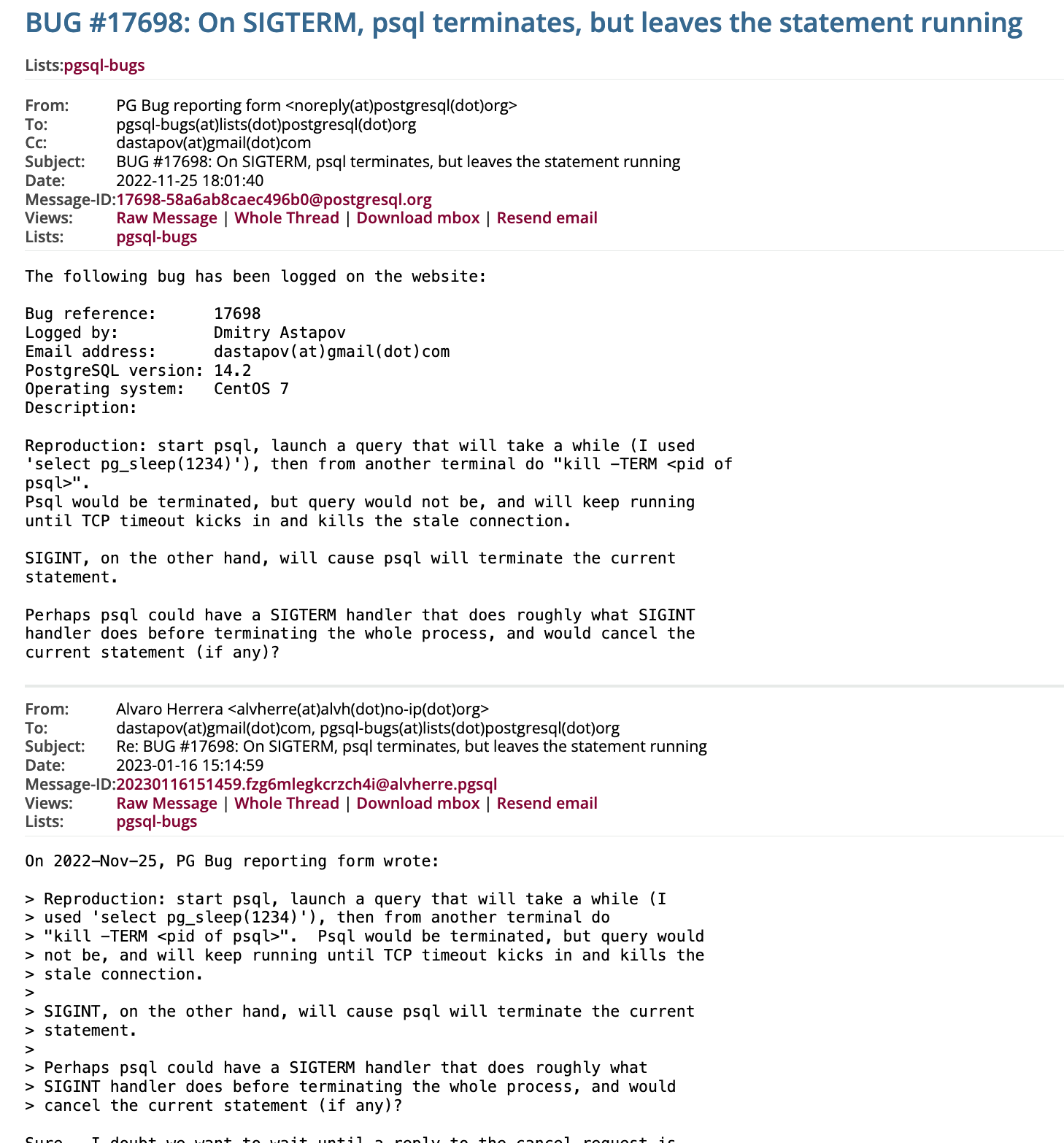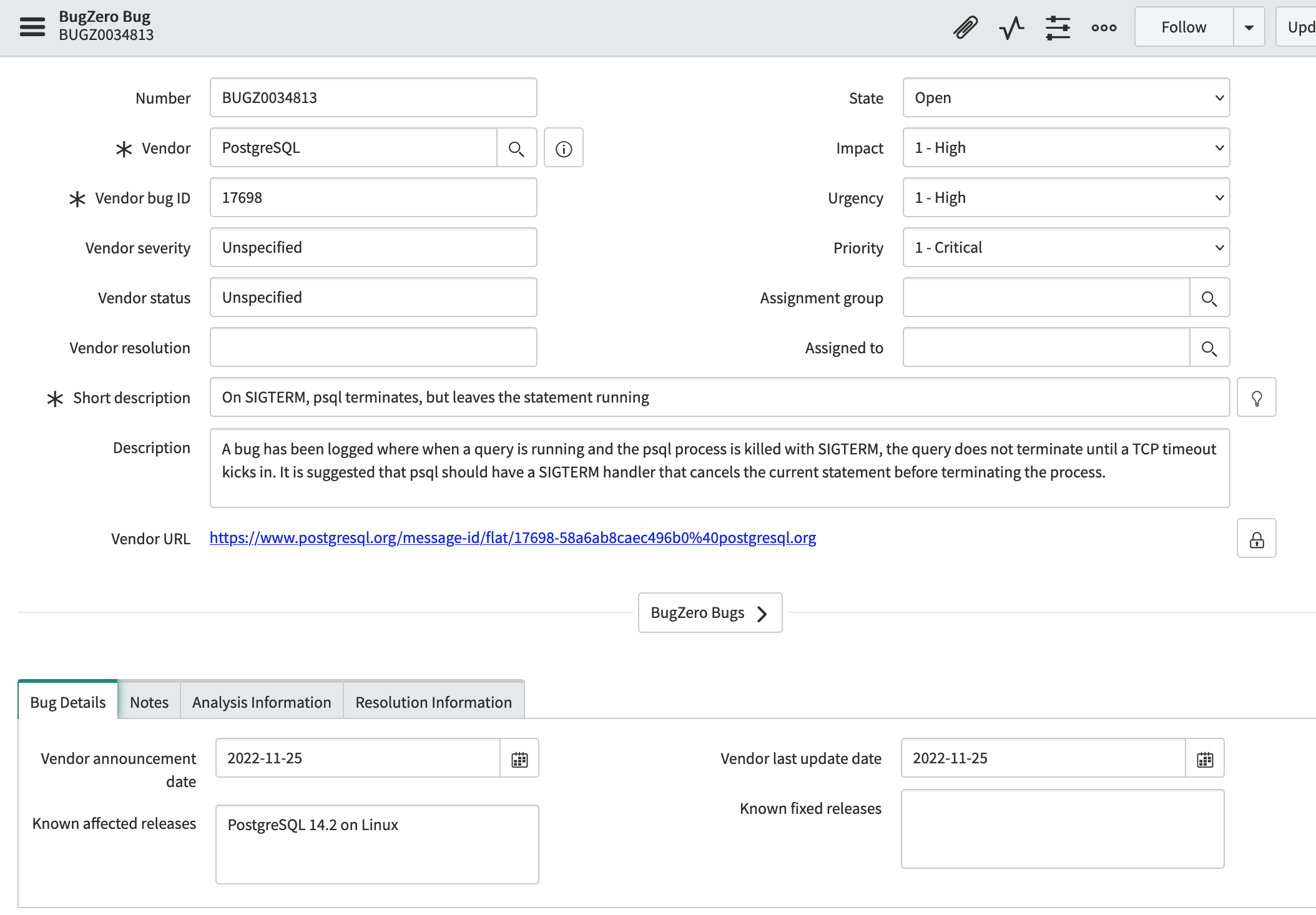Bug SummarizationGenerative AIPostgreSQL
BugZero's PostgreSQL Bug Summarization: A Practical Implementation of Generative AI
It can be frustrating when you encounter a software bug and must research through many long, technical threads to find a solution. When digging through message boards and bug tracker threads, it’s common to wish for something to simply hand you the answer you’re looking for. Or, at the very least, to structure and summarize the data you are manually parsing.


Eric DeGrass
June 30th, 2023
It can be frustrating when you encounter a software bug and must research through many long, technical threads to find a solution. When digging through message boards and bug tracker threads, it’s common to wish for something to simply hand you the answer you’re looking for. Or, at the very least, to structure and summarize the data you are manually parsing.
For PostgreSQL bug tracker threads, this need for a quick and easy-to-understand answer is heightened, as these databases are often in production environments handing critical data. In BugZero’s Operational Defect Database (ODD), you can research PostgreSQL operational defects similar to how you would in the Postgres bug tracker discussion threads. However, there has never been a way to easily structure and summarize those Postgres bug tracker threads.
Until now.
Using Machine Learning (ML), the ODD PostgreSQL bug entries now include a thread summarization. Let’s explore this ML implementation, how it works with PostgreSQL bug tracker threads, and how it helps you find what you’re looking for faster.
What Does This New Feature Do?
BugZero is excited to announce that our ODD now uses Generative AI for PostgreSQL bugs! BugZero is leveraging the Hugging Face inference model, Machine Learning Transformer (a deep learning model), Bidirectional Encoder Representations from Transformers (BERT), and other Large Language Models (LLMs) to simplify PostgreSQL bug research.
Nobody would argue that Postgres bug tracker threads are difficult for humans to parse. Long debates about bugs, potential solutions, patch updates, or issues with no resolutions...

... are now instantly identifiable in an easy-to-read manner. With the Natural Language Generation (NLG) and LLMs working together, these unorganized bug tracker threads are structured and summarized as part of the ODD bug entry. Now you can research Postgres bugs via indexed bug entries just like you do with bugs from other vendors.

How BugZero Uses Machine Learning (ML)
Because the BugZero ODD has a massive amount of well-structured operational defect data, it is easy for the LLMs to gather the necessary info for summarization.
BugZero uses a Large Language Model and an instruction-tuned LLM to gather the needed data. An instruction-tuned LLM means that our platform can extract PostgreSQL bug information, write the PostgreSQL version and operating system, then summarize the resolution once there is one.
Effectively, the instruction-tuned LLM allows the summary to include:
The defect itself
Who logged it
When it was logged
The system version
A brief description of the defect
What the LLM determined to be the solution
This is often called data wrangling in the data science machine learning world, but it is more formally known as data engineering. In short, this new feature gathers the data, then organizes and summarizes it, allowing you to take your next steps with a fraction of the previously required time and effort.
Because the BugZero ODD has a massive amount of well-structured operational defect data, it is easy for the LLMs to gather the necessary info for summarization.
How Can I Use This New Feature?
Under each ODD PostgreSQL defect entry, the summarization will automatically be in the description.
This feature’s goal is to reduce the time and manpower required to identify things that truly affect you and to quickly figure out how concerning that defect is. Now, you are relieved of searching through complex technical details and can resolve your Postgres issues faster!
In the current summary, the LLM explains if the operational defect affects you and if the defect was resolved in any way. In future releases, the LLM summary will include severity and other risk factors.
Enjoy Your PostgreSQL Thread Summarization!
No longer will you need to sift through technical notes that are irrelevant to anybody except for the software developers. Instead, our new Generative AI feature will give you the compact synopsis you need.
Soon, ODD will use additional AI/ML tools to provide enriched defect information for other vendors. It’s time for software to solve software problems and make everyone’s lives easier. This is one of the core tenets of BugZero.
The Operational Defect Database is a free resource to use as you please. For those of you who are ServiceNow customers, check out BugZero’s enterprise solution and our ServiceNow app which will inform you in real time about new bugs from Postgres and many other products. Learn more about BugZero and how our Operational Defect Database can help improve your organization’s resiliency and efficiency!

FSA complianceOfcom ComplianceOperational ResilienceUK Regulatory Changes
The DRCF’s Cross-Regulatory Approach to Operational Resilience: A Model for the Future
Eric DeGrass
March 13th, 2025

Governance, Risk and Compliance (GRC) IT Service Management (ITSM)Risk Ratings
For Justice to be blind, Risk management needs 20/20 vision: The Full Cost of the HMCTS IT Bug Cover-Up 
Eric DeGrass
August 19th, 2025

DRCFOperational ResilienceTelecommunicationsUK Regulatory Compliance
The Regulatory Lens Sharpens: Why Telecoms Must Heed the Call for Operational Resilience
Eric DeGrass
July 15th, 2025
Subscribe to our Zero Defect Digest
Sign up to receive a monthly email with stories and guidance on getting proactive with vendor risk
BugZero requires your corporate email address to provide you with updates and insights about the BugZero solution, Operational Defect Database (ODD), and other IT Operational Resilience matters. As fellow IT people, we hate spam too. We prioritize the security of your personal information and will only reach out only once a month with pertinent and valuable content.
You may unsubscribe from these communications at anytime. For information on how to unsubscribe, as well as our privacy practices and commitment to protecting your privacy, check out our Privacy Policy.